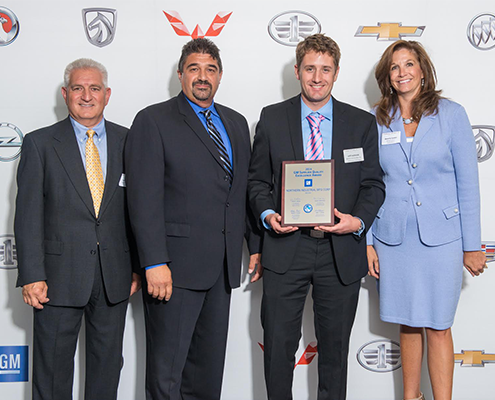Axle Assembly & The Importance of Precision Thickness for Shims
Axle assembly is a critical component of any vehicle, responsible for transferring power from the engine to the wheels. It’s a complex system that includes several parts, each playing a unique role in ensuring smooth transmission of power and overall vehicle performance.
The axle, differential, and driveshaft are the main components, working in harmony to provide directional stability, handling, and ride comfort. The construction of axle assemblies involves careful attention to detail and precision. Each part, from the largest to the smallest, is meticulously assembled to ensure optimal performance and longevity of the whole system.
One of the critical components that often gets overlooked in the axle assembly process is the precision shim. Precision shims are thin pieces of metal used to fill in gaps or adjust space between components in machinery and equipment. In axle assembly, they play a pivotal role in maintaining the exact alignment and spacing required for the axle to work efficiently.
Understanding the Role of Precision Shims in Axle Assembly
Precision shims in an axle assembly play a crucial role in maintaining accurate alignment and spacing. They’re often used between the axle housing and the differential carrier or between the carrier bearings and the differential case. The primary function of these shims is to control the position of the differential within the axle housing, which directly impacts the vehicle’s handling characteristics.
Precision shims are also used to control the preload on the differential bearings, ensuring they function optimally. They make minute adjustments that can greatly influence the performance of the axle assembly and, consequently, the vehicle. The thickness of these shims is critical in determining the amount of adjustment made. The need for precision in shimming cannot be overstated. The correct shim thickness is essential in ensuring proper gear mesh and bearing preload, which are crucial for the smooth operation of the axle assembly. Without the right precision shim, the axle assembly could fail, leading to costly repairs and downtime.
The Importance of Precision Thickness for Shims
The precision thickness of shims in axle assembly is of utmost importance, as it directly impacts the performance of the vehicle. The shim’s thickness can affect the gear mesh, backlash, and bearing preload, all of which are critical for the smooth operation of the differential and axle assembly. A thicker precision shim can increase the distance between components, reducing gear mesh and increasing backlash. This can result in gear whine, premature gear wear, and even gear failure.
On the other hand, a thinner shim can bring components closer together, increasing gear mesh and reducing backlash. However, if the shim is too thin, it can lead to excessive gear mesh, resulting in overheating and premature gear failure. Choosing the right precision shim thickness is a delicate balancing act. It requires careful measurement and calculation to ensure optimal gear mesh, backlash, and bearing preload. It’s a critical aspect of axle assembly that demands expertise and precision.
Decoding the Torque vs. Turn Ratio in Axle Assembly
The torque vs. turn ratio in axle assembly is another critical factor that influences the performance of the vehicle. It’s a measure of how much the axle rotates for each turn of the driveshaft. This ratio is crucial in determining the vehicle’s acceleration, top speed, and fuel efficiency. The torque vs. turn ratio is directly related to the differential gear ratio. A higher ratio means the driveshaft turns more times for each turn of the axle, resulting in greater acceleration but lower top speed.
A lower ratio means the driveshaft turns fewer times, resulting in lower acceleration but higher top speed. The precision shim plays a crucial role in maintaining the optimal torque vs. turn ratio. By adjusting the position of the differential within the axle housing, the shim can influence the gear ratio and, consequently, the torque vs. turn ratio. This makes the precision shim an important component in achieving the desired vehicle performance.
The Necessity of Metal Spacers in Axle Assembly
Metal spacers, like precision shims, are essential components in axle assembly. They’re used to maintain the correct spacing between components, ensuring proper alignment and operation. In axle assembly, they can be found between the axle housing and the differential carrier or between the carrier bearings and the differential case. The metal spacers play a crucial role in maintaining the correct bearing preload and gear mesh. They ensure the differential is positioned correctly within the axle housing, which directly impacts the vehicle’s handling characteristics. By adjusting the position of the differential, the metal spacers can influence the torque vs. turn ratio, making them an indispensable part of axle assembly. Just like precision shims, the right thickness of metal spacers is crucial. Too thick, and they can cause excessive gear mesh and overheating; too thin, and they can cause insufficient gear mesh and premature gear wear. This makes the selection of the right spacer thickness a critical aspect of axle assembly.
Detailed Analysis on Roller Bearing Settings
Roller bearing settings in axle assembly are another critical aspect that affects the performance and longevity of the vehicle. They’re responsible for reducing friction between the rotating components, ensuring smooth operation and reducing wear and tear. The correct setting of these bearings is crucial for the optimal performance of the axle assembly. The setting of roller bearings involves adjusting the bearing preload, which is the amount of pressure applied to the bearings. This is done using precision shims and metal spacers, which control the position of the differential within the axle housing. The correct bearing preload is crucial.
Too much preload can cause the bearings to overheat and fail prematurely. Too little preload can cause excessive play, resulting in vibration, noise, and premature wear. This makes the precision shims and metal spacers critical components in roller bearing settings.
The Interplay Between Precision Shims, Torque vs. Turn Ratio, Metal Spacers & Roller Bearing Settings
The interplay between precision shims, torque vs. turn ratio, metal spacers, and roller bearing settings is a complex, intricate dance that determines the performance and longevity of axle assemblies. Each component plays a crucial role, influencing the other components and the axle assembly as a whole. Precision shims and metal spacers control the position of the differential within the axle housing, affecting the gear mesh, backlash, and bearing preload. This, in turn, influences the torque vs. turn ratio, determining the vehicle’s acceleration, top speed, and fuel efficiency. The roller bearing settings, adjusted using precision shims and metal spacers, reduce friction between rotating components, ensuring smooth operation and reducing wear and tear. This complex interplay of components, each influencing the others, is what makes axle assembly such a critical, precision-oriented process.
The Consequences of Incorrect Shim Thickness in Axle Assembly
The consequences of incorrect shim thickness in axle assembly can be severe. It can cause problems with the gear mesh, backlash, and bearing preload, leading to premature gear wear, gear failure, and bearing failure. Incorrect shim thickness can also affect the torque vs. turn ratio, impacting the vehicle’s acceleration, top speed, and fuel efficiency. It can cause excessive vibration and noise, reducing the comfort and safety of the vehicle. The cost of incorrect shim thickness can be high, not just in terms of repair and replacement costs, but also in terms of downtime and potential safety issues. This underscores the importance of precision thickness in shim selection and axle assembly.
How Precision Shims Affect the Overall Performance of Axle Assembly
Precision shims play a crucial role in axle assembly, affecting its overall performance in several ways. They control the position of the differential within the axle housing, directly impacting the gear mesh, backlash, and bearing preload. This, in turn, affects the torque vs. turn ratio, influencing the vehicle’s acceleration, top speed, and fuel efficiency. Precision shims also play a crucial role in roller bearing settings, reducing friction between rotating components and ensuring smooth operation. By maintaining the correct bearing preload, they help prevent premature bearing wear and failure. Without the right precision shim, the axle assembly cannot function optimally. This makes precision shims an indispensable part of axle assembly, directly affecting its performance and longevity.
The Indispensable Role of Precision Thickness in Axle Assembly
The role of precision thickness in axle assembly is indispensable. It affects several critical aspects of axle assembly, including the gear mesh, backlash, bearing preload, and torque vs. turn ratio. The correct precision shim thickness is crucial for the optimal performance and longevity of the axle assembly, directly impacting the performance, safety, and fuel efficiency of the vehicle. Precision shims, along with metal spacers and roller bearing settings, form a complex interplay of components that determines the performance of the axle assembly. Each component plays a crucial role, influencing the other components and the axle assembly as a whole. The consequences of incorrect shim thickness can be severe, leading to premature gear wear, gear failure, bearing failure, excessive vibration and noise, and reduced vehicle performance. This makes precision thickness an essential consideration in axle assembly, underscoring the need for careful measurement, calculation, and selection of precision shims.
Axle Assembly Parts Manufacturing | Michigan
Northern Industrial Manufacturing is your turnkey partner for even the most challenging projects. Our experts understand which options work best for your specific material and surface finish requirements, and offer the most advanced technologies to meet the needs of your unique project.
We will bring your parts to market on time – with assistance from prototype to volume production – quickly, affordably and efficiently as possible.
Thank you for visiting our blog where we keep customers updated and informed on the latest processes in automotive parts manufacturing!
Please check back often if you would like to learn more about the world of precision thrust washers, selective shims, spacers, and other automotive parts.




